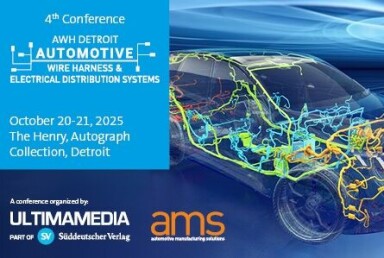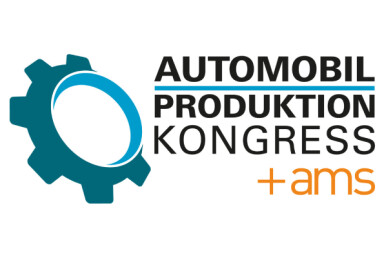Thermal modelling
AMS reports on the latest software for modelling the thermal performance of electronic systems.
The typical list of electronic application areas in even a standard mass-produced vehicle might well include, for instance, anti-lock braking, fuel management, suspension system, satnav, lighting and instrumentation. But electronics generate heat, and if that thermal energy is either more than expected or cannot be dissipated effectively then trouble can follow.
As recently as May 2012, for instance, Chrysler in the US announced that it was recalling 300 series and Dodge Charger vehicles built during 2011-12 because their anti-lock braking and stability control systems might malfunction through a loss of electrical power caused by an overheating fuse box. At the time, very nearly 120,000 vehicles were deemed to be potentially at risk. The year before, Rolls-Royce recalled almost 600 of its Ghost sedans in the US because of the possibility of a circuit board overheating.
Mechanical and electronics cooling simulation
Any advance in the ability of car makers to avert such incidents is bound to be of interest, and the further up the whole vehicle production chain that advance can be exercised the better. Electronics design software company Mentor Graphics describes its recently released FloTHERM XT electronics cooling simulation software system as the first product on the market to support completely integrated mechanical and electronics cooling simulation.
The advantages, according to the $1bn turnover company, include an ability for mechanical as well as electronics design engineers to use it to support much earlier virtual prototyping, reduced design iterations and enhanced ‘whatif ’ analyses. Taken together, all these factors could compress design cycles for relevant systems by as much as 60-70% compared with previously available capabilities, says the company.
Boris Marovic, worldwide product marketing manager for automotive and transportation at Mentor, says that though much of the analytical capability of the product is derived from previous versions of the software, its ability to import geometric modelling information – in other words design data about the structure of the vehicle – generated in any other ‘mechanical’ CAD system in that system’s native format is crucial. It means that there is no requirement for any intermediate translation that might degrade the accuracy of the data, he says. According to Marovic this capability, which enables models of electronic components to be placed in equally completely accurate virtual representations of their intended real physical location in a vehicle, is unprecedented and is crucial to the overall effectiveness of the product. It enables more precise simulation of the thermal consequences of particular design choices, he says.
As Marovic also explains, current trends in electronics technologies themselves are making this capability increasingly pertinent. The one he cites as most influential is the decreasing size of those components with the consequent ability to pack printed circuit boards more tightly and, indeed, locate the boards in more confined spaces within the vehicles.
But, as Marovic also points out, this development is not quite as obviously beneficial as it might at first appear because the smaller components still have to provide all the functionality of their larger predecessors. In consequence, their power consumption is not reduced in direct proportion to the diminution in their size and that means the overall power density of a smaller PCB could well be greater than that of a larger one. In short, an apparent advance in technical capability has the potential, as Marovic notes, to “cause problems”.
Moreover this potential is latent everywhere in the vehicle. Marovic says that from his perspective, which is based on contact with both vehicle OEMs and companies lower down the supply chain, there is simply nowhere in a vehicle now that is immune to the threats involved. Engine control, fuel injection, air conditioning, navigation and entertainment systems are all mentioned by him as areas that have markedly increased their utilisation of electronics components in recent years. The spread of LED headlights from upmarket to mid and lower range vehicles is another trend he remarks on. Indeed, one statistic derived from Mentor’s own research epitomises how the whole situation has developed over time. “A Volkswagen Beetle produced in 1972 had 46 metres of wiring in it,” says Marovic. “But today a new Mercedes will have around four kilometres”.
Another factor is likely to come into play is the complex geometry of the cars, which means the physical space in which PCBs are located may well be constricted aggravating the effects of their increased power density. This is where the enhanced ability to integrate the mechanical and electronic design worlds offered by the new software becomes critical. “Design space is increasingly a constraint,” as Marovic puts it.
So does the software deliver on its promise? Someone who thinks it does is Guy Wagner, director of Electronic Cooling Solutions, a specialist consultancy based in Santa Clara, California, that carries out airflow and cooling solution simulation work on projects that range in scale from “handheld devices to complete computer rooms”. Wagner says his company was involved in the beta-testing of the software before its formal release and confirms that he personally used it extensively.
Wagner explains that when electronics elements designed in the software are integrated with geometric data designed in the SolidWorks 3D geometric CAD package used by Electronics Cooling Systems, there is genuine interaction between the two. In other words, when the geometry is altered, the effects on the thermal performance of the PCB are automatically calculated and signalled to the designer.
Wagner also highlights a number of other enhancements within the new version of the software that are particularly pertinent to the problems of modelling the thermal performance of electronics systems, especially in confined spaces. One he regards as highly significant is the greatly improved ability to model curved surfaces – both of the boards themselves and the components packed on them. He explains that previously such surfaces had to be approximated through the use of multiple small rectangular objects. In addition, he says, the software can generate extremely fine ‘meshes’ that correlate much more closely to the actual geometry of the boards and that the modelling of material properties such as conductivity and emissivity is also noticeably better than before.
In short, it does seem that a new and powerful analysis tool has appeared on the market that could prove of great use to companies seeking to integrate more compact and hence more thermally intense electronics systems into larger and geometrically complex mechanical environments. Automotive companies certainly fit that description.


